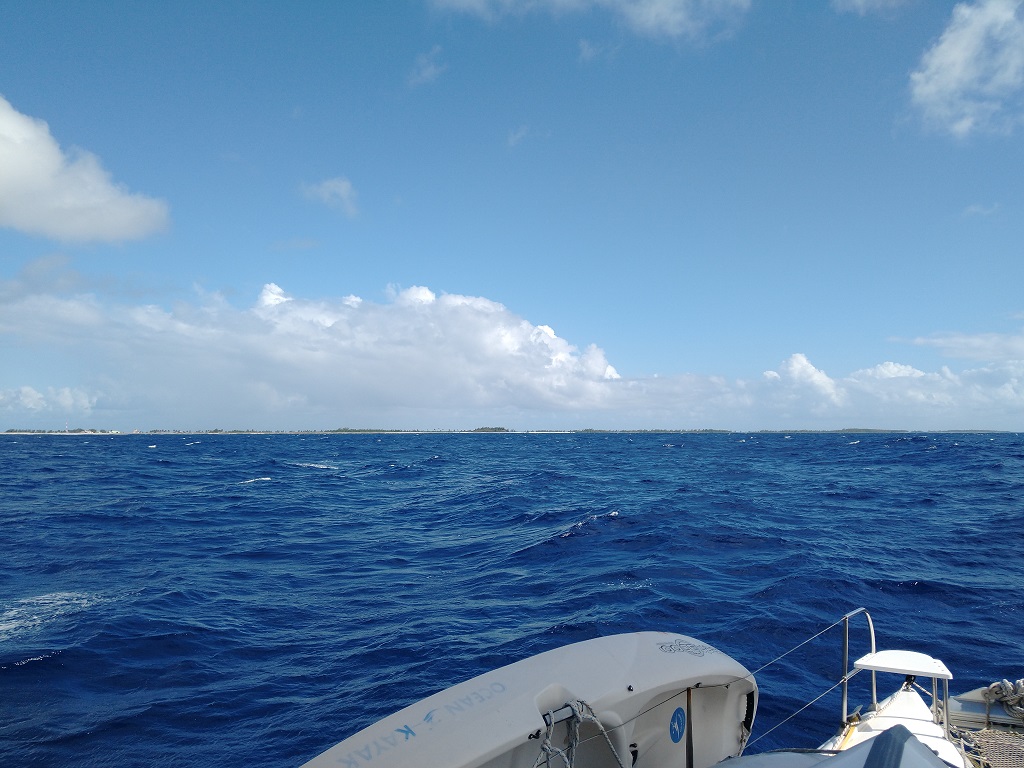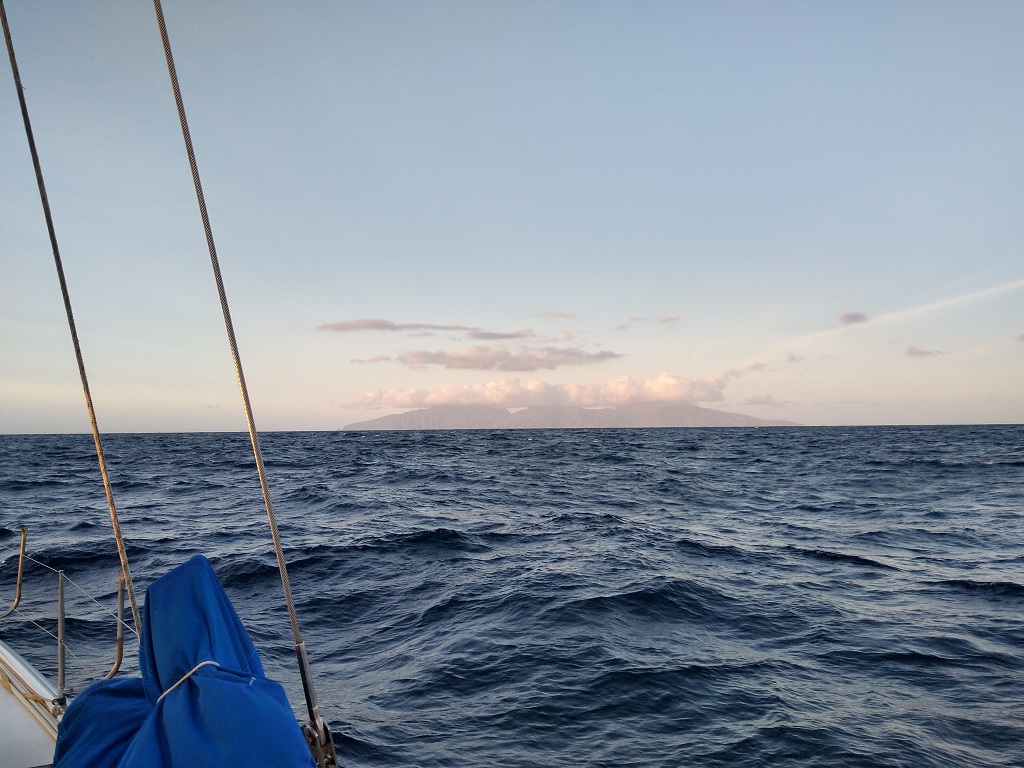(30th July to 4th August 2022)
Quick note before I start – I am changing the way I am posting the blogs. Rather than post them on a monthly basis, I will post as and when we have visited an area, or when I have enough to say, otherwise it becomes very long winded and I don’t want to bore you! So, short ( ish!) chapters rather than whole tomes!! lol Ally 🙂
Hao is a wonderfully friendly atoll, with cheerful, welcoming inhabitants. The day after we arrived, which was a Sunday, we went ashore to explore the village of Otepa a little and found very sleepy and quiet roads and very few people around (It wasn’t much different when we went ashore in the week either). Those we did come across were friendly and greeted us as we passed them by. There is a large dock area here, for the same reason as Mangareva, Gambier, and it was quite busy with young people fishing, playing games and just being together. We watched the lads fishing for a while and saw a small black tipped reef shark come close to investigate whatever it was that they were trying to catch, and we also came across a game we had never seen before. We don’t know what it is called, but it appeared to be a football on the top of a tall post and the guys were throwing home made spears at in, into wind, to see who could spear the ball at the top. They called Shawn across to have a go. He threw 2 spears, but didn’t hit the target. The next couple of days, we spent the mornings doing chores ( laundry, maintenance and cleaning…unfortunately they still need to be done!), before spending the afternoon exploring the atoll on our bikes. Thankfully, it is flat and so the cycling was easy and on the first ride we headed South to try to get to the end of the land, but after 7 miles, the road was blocked off and entry prohibited, so we went to the shore line and did a little beach combing. It was a varied ride with some very pretty areas where we discovered an unusual plant with red and green foliage that looked like a flower but wasn’t, and there were some very picturesque views out across the turquoise water. The shoreline is all dead, broken up coral and volcanic rock, so not conducive to relaxing and taking a dip to cool off.
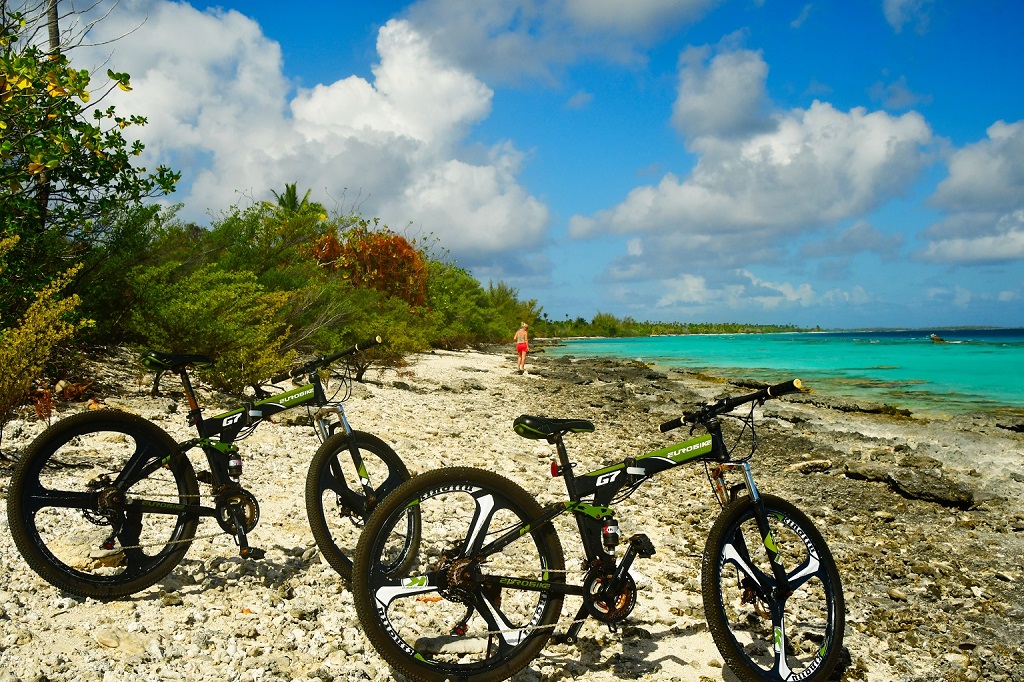
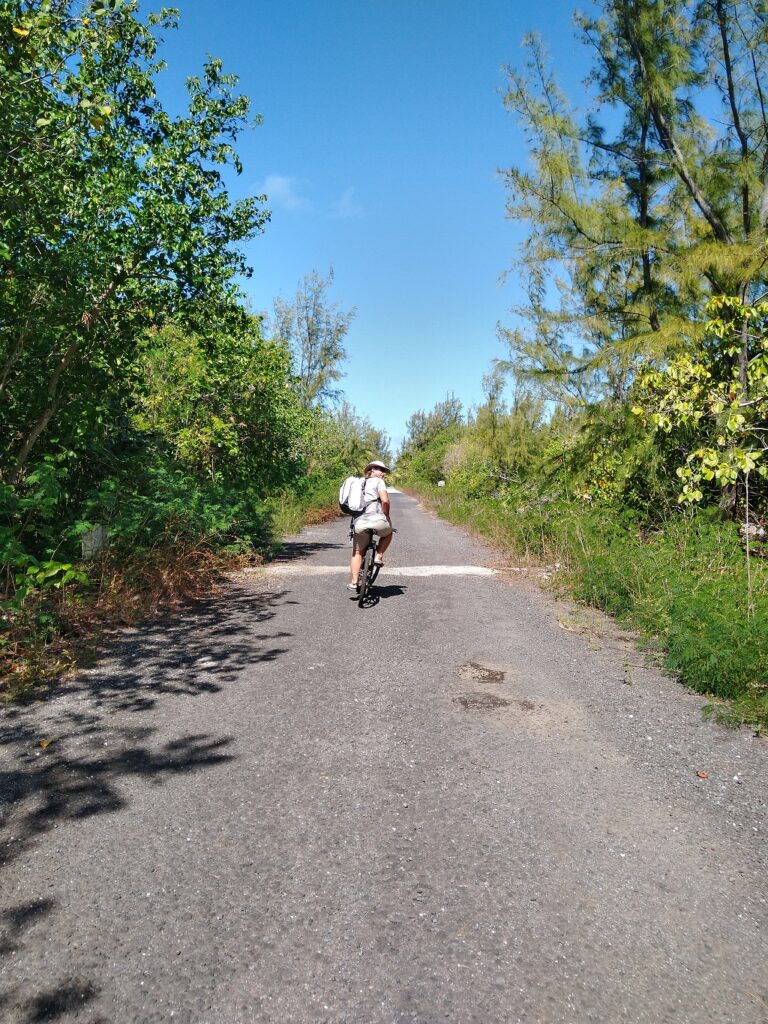
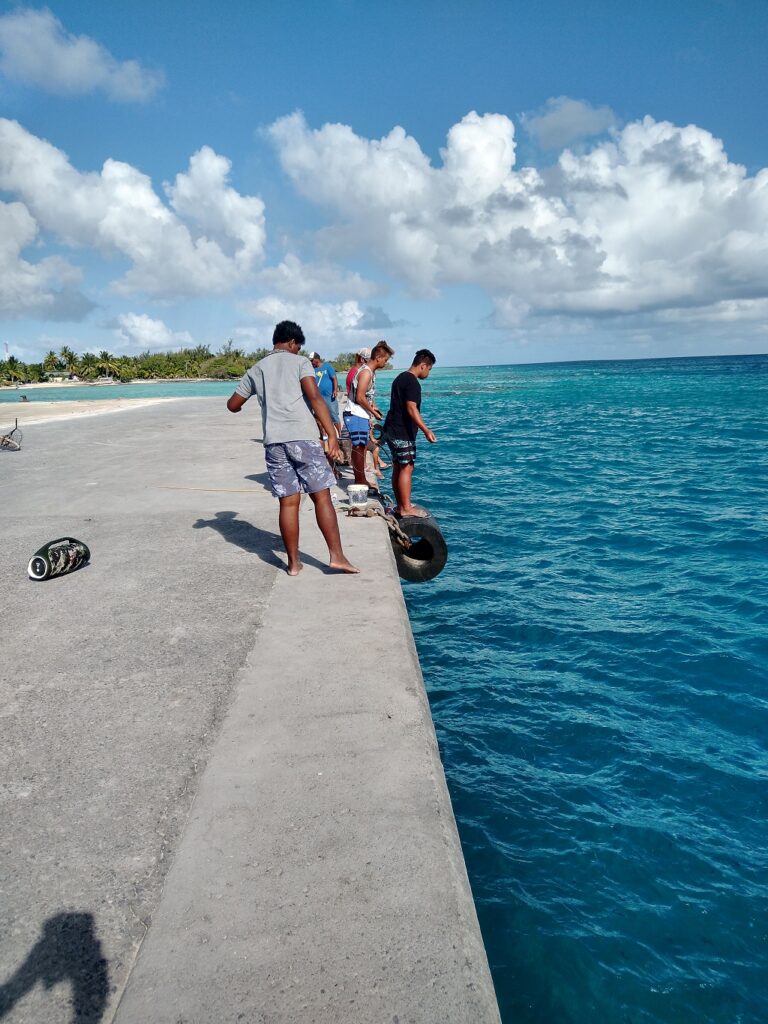
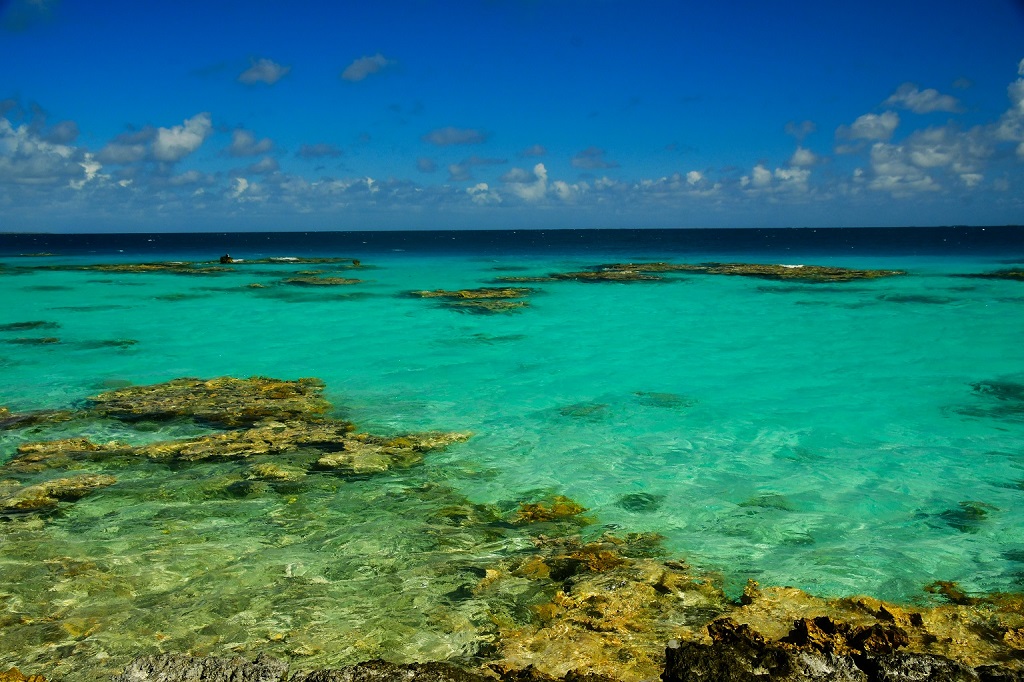

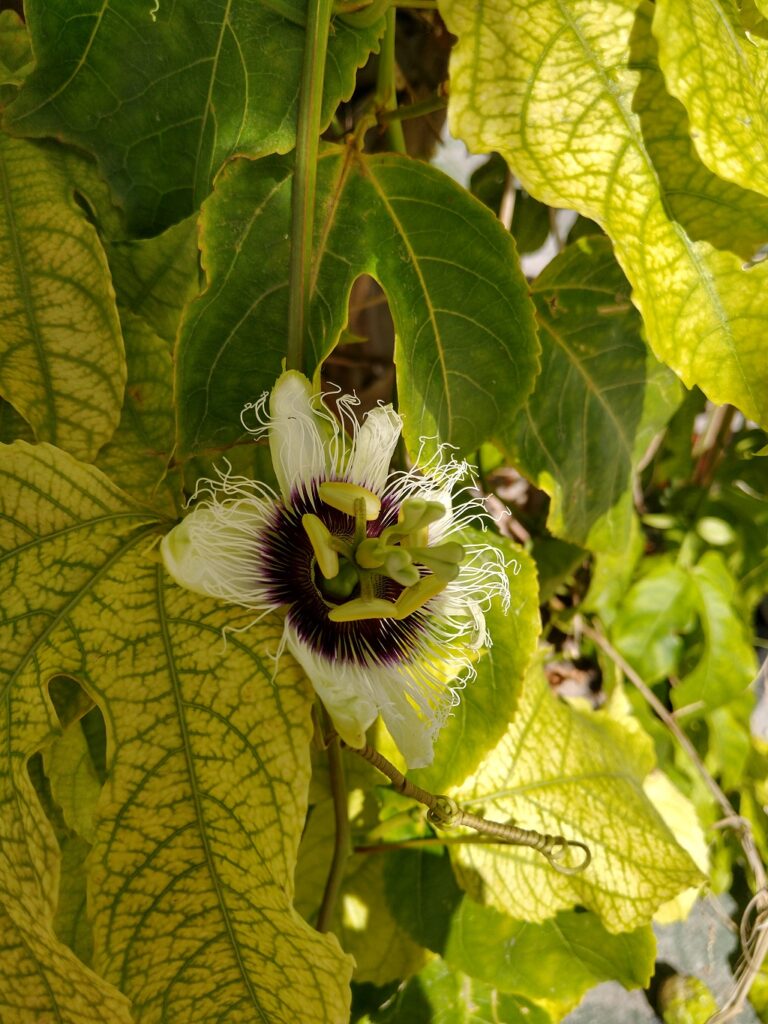
The second ride was 7 miles approx. to the North. There is no airport boundary fencing or security and it felt strange cycling right next to the runway of the airport (they have a couple of flights a week here) which seemed massively long for the size of the aircraft landing here. It’s around 3.3km ( 2 miles) long, the longest in the South Pacific. Long enough, that it has been considered as an emergency landing place for NASA space shuttles. The French military’s presence from 1966 to 1996 is still evident when they had an airbase here into which they transported materials and equipment to monitor nuclear testing that was being done on an island 500km away. There are areas of old concrete buildings, possibly barracks, some of which are now inhabited by islanders and little concrete rectangular boxes with small windows dotted about the atoll (maybe viewing stations?) and just beyond the airport, there is an old dock area with large rusted steel docking bollards and a landing craft slip. We cycled on to the very end of the Motu to the pass that we came through when we arrived. We spent time watching a family of small moray eels hiding amongst the rocks in a rock pool and could see that the remains of what was probably a small harbour area that was maybe used as a watch area by the navy, were still visible. Ally’s butt was really suffering after 2 long rides on subsequent days, so the ride back to town was slow and steady, with several stops and a few tears along the way!
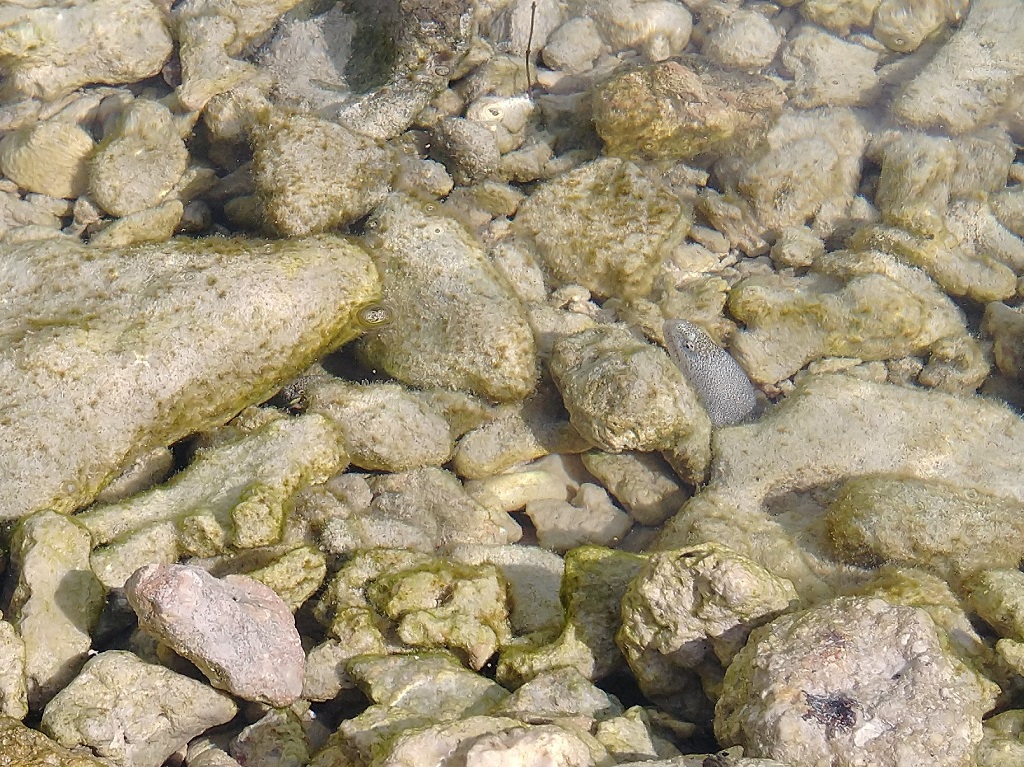
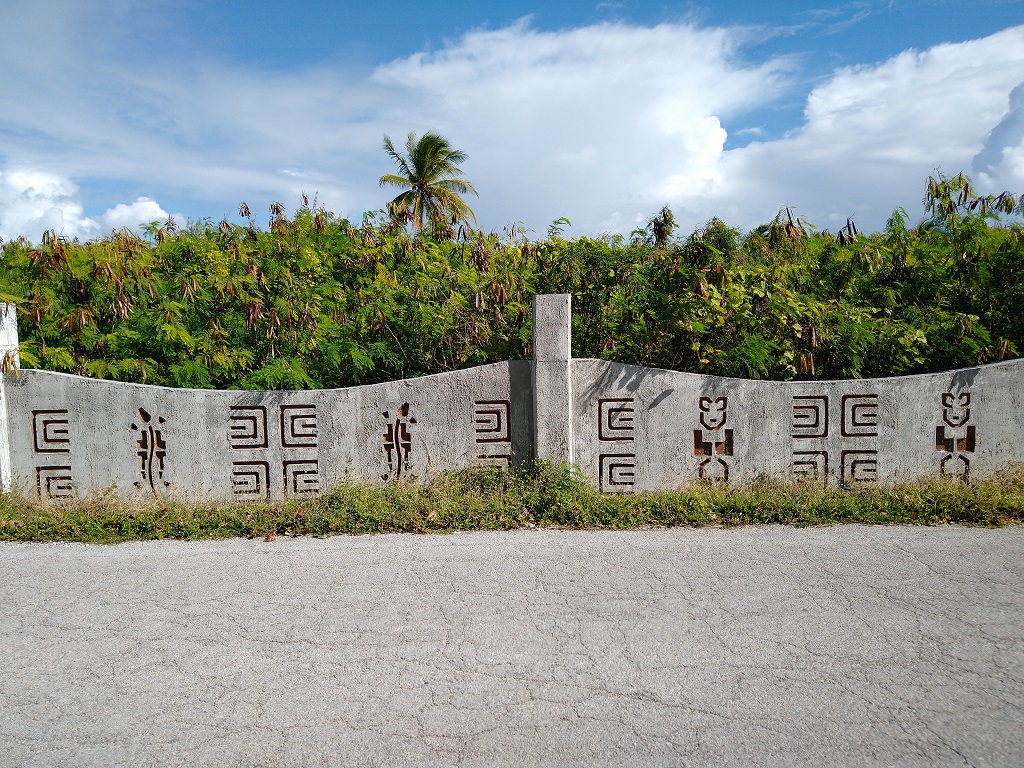
The local sim we bought in Gambier still would not enable us to get online on board, or anywhere on shore, the signal was just too weak. When 2 teenage girls greeted us as we were arrived back in the village after our first cycle ride, we seized the opportunity and asked, with our very limited French, where we would be able to get wifi. They happily tried out their English to explain that the Town Hall turned on the network for a few hours every evening and even walked us there and went in to confirm the times for us. We were very grateful to them and thanked them for their time as they wished us a good evening. How lovely it was that first time online after 6 weeks, to be able to catch up with emails and facebook, to see and read the love and support from those that had been watching our progress and waiting for updates. During our Pacific crossing we asked our good friend Simon to post updates on our facebook page as we were unable to access it, which he duly did, and he is now a fully fledged “admin” for our page, for which we are very grateful.
During our stay here, we only had 2 other boats in the anchorage with us, and both of those left on the morning of the 3rd August. After the exertion of 2 bike rides, we took it easy that morning and after lunch went for a snorkel on the many rocky/coral outcrops in the anchorage towards the shore and dock. The formations here are fabulous but the fish are not as numerous as you would expect, Maybe Ciguatera isn’t as prevalent here and it’s been fished out? At one point Shawn went one way and Ally the other and as she went through a gap between two formations, a 4ft black tip reef shark passed just underneath her and went off around the reef…..gave her a shock, but exciting at the same time!
At 06.50 on 4th August, we were on our way back out of the Hao atoll and went through the pass at 8am with around 1.5 knots of current on our nose. Sailors arriving or leaving need to pay attention to tides and moon cycles as this has a massive impact on conditions when going through the pass and can create big standing waves and powerful currents. We were now heading for Fatu Hiva in The Marquesas ( we’ll be returning to different atolls within The Tuamotus next month). The conditions seemed very settled as we left and the weather forecast good. The ocean was calm in comparison to all crossings since February and the sun was out – a beautiful day. We caught a small tuna a few hours in, one we’ve not seen before with a dark blue back and brilliant blue markings (We’ll have to try and identify it when we can). It was enough for 2 meals for the two of us…the first of which was that evening – Japanese grilled tuna with Japanese fried rice – Ally’s daughter will be proud as she loves Japan and travels there as often as she can!
Progress slowed with the dying of the wind, so we pulled out a reef in the mainsail. We were in no rush and were enjoying the slow, unpressured sailing these conditions bring. With 3 fishing lines out on the morning of the 5th August, it wasn’t long before we caught 3 fish simultaneously at 08.45. They were all good sized tuna, the same species as yesterday, but much bigger. Ally reeled in one and Shawn the other two, one of which was on a hand line left for us by Gary, a former charter guest and then crew member on the Panama Canal transit. The biggest fish weighed around 25lb, the other two around 22lb and after we had spent the next couple of hours processing them, we had 52 portions in the freezer…thank goodness we have plenty of freezer space!!
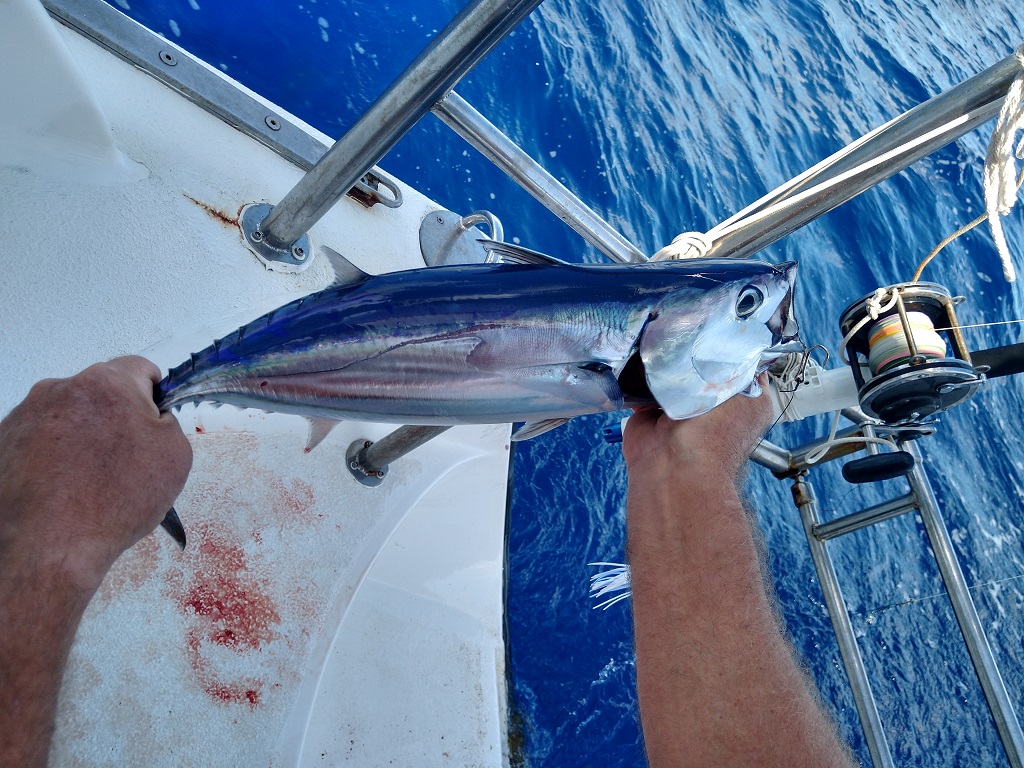
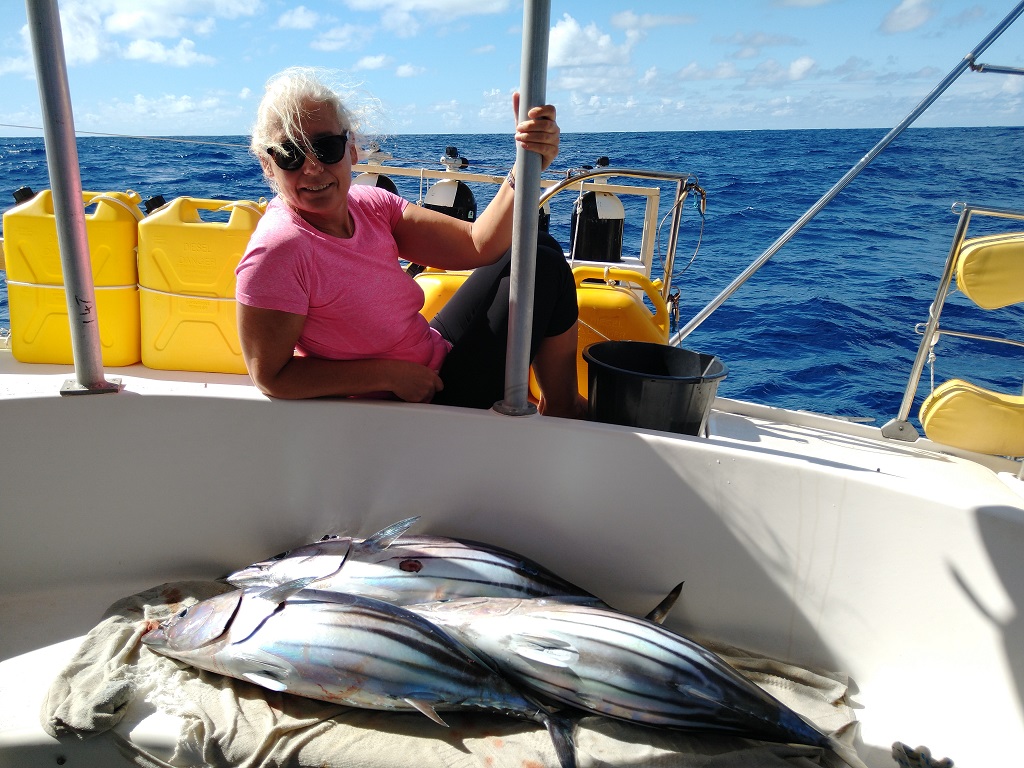
We had the biggest flying fish we have ever seen on our starboard aft deck one morning. We didn’t think they could grow that big, but this is the South Pacific where we have found many of the fish grow larger than in the Caribbean. What should have been a 3 night voyage, became 4 as the wind decided to change direction and not in our favour so we had to do a couple of tacks which always loses distance and time. 30 nautical miles away, after breakfast on the 8th August, Fatu-Hiva was looming on the horizon. You couldn’t get more of a contrast of topography between Tuamotus with it’s low lying atolls and the steep peaks of the Marquesas which are the newest of the French Polynesian islands
